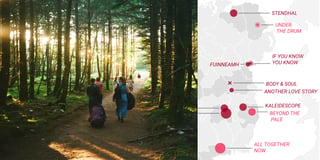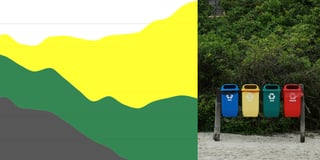The evolution of the Tour de France
Hi there, it’s Jonathan from the Comms team! I really enjoy cycling, but have never been into the competitive side of things. Seeing as this year’s Tour de France is well under way, I'm dedicating my first Weekly Chart to a look back into the prestigious race’s history.
The Tour has come a long way since its first edition in 1903 — being held every year without fail, except for two breaks during the World Wars. From its humble beginnings as a newspaper marketing stunt, the event quickly turned into cycling's most important race. The name itself is probably known to almost everyone, but is the history?
I’m not usually that interested in the world of professional sports, but I find some of the events it produces conceptually intriguing. When you add a rich backstory and the technical evolution of a whole sport into the mix, it starts to sound like a fascinating deep dive.
So I sat down, read up on the lore, and found some nice data to explore. I was most interested in numbers that could reveal how the Tour has changed in its 120+ years, and what it takes to win the famous yellow jersey.
After adding a few more entries to a very promising dataset, I came up with this: A scatter plot showing all winners, with stats about their victory revealed (on hover) in each tooltip. For the best experience, viewing it on desktop is strongly recommended.
The winning margin
Throughout most of the Tour's history, the winner has been decided through the overall time accumulated during all stages. The fastest time wins — which is why I chose speed as the focal point of this plot. Just as interesting is the margin though, which is the time difference between the first and second place. Some of the more chaotic first editions had huge gaps in the ranking (or missing data altogether), while today's wins are often decided by just a few minutes.
The smallest winning margin so far has been that of Greg LeMond in 1989, with just 0.13 minutes or eight seconds. To anyone interested in a a bit of margin history, I recommend this article by Rouleur.
The riders
It takes a very special person to take part in this race, let alone win it. Physically and mentally, these people are some of the most formidable athletes in the world. The Tour has featured colorful characters from the very start, and a few with tragic stories as well, going far beyond the scope of this blog post. Still, I want to take a moment to look at some of the rider data here.
The bikes' evolution
Although the cyclists win the race, their machines are just as crucial. That's why it was important to me to include pictures of a few bikes in the chart, showing how the whole sport has developed alongside the race. Looking at the riders’ hardships today, it’s hard to imagine how tough the Tour must have been in the early years, on fixed gear steel bikes with wooden wheels. Sourcing images of some of these models was surprisingly hard, as was finding out which exact bike was ridden to victory in select cases. In fact, many of the pictured examples are replicas, with decreasing accuracy the older they get.
Recent years have been documented more reliably, and, in my opinion, introduced the most interesting bike designs. I’m especially fond of some turn-of-the-century models, like Jan Ullrich's Team Telekom Pinarello from 1997, and Óscar Pereiro’s 2006 magnesium Pinarello (which was the last time a metal frame won — ever since, it's been full carbon). Pinarello is also the most successful manufacturer throughout history, with 16 official wins so far.
It's important to note that for consistency's sake, I chose to picture the regular bikes and exclude the even crazier evolution of specific aero and time trial bikes. To anyone interested, I highly recommend looking those up, like in Pinarello's hall of fame. More about general bike history can be found in this article by Roadcyclinguk, and more about manufacturers in this article by Cyclingnews.
I hope this Weekly Chart has given you a new perspective of the race. Now it's time to enjoy the final days of the Tour de France before it ends this Sunday! Next week, you can look forward to a story from our visualization developer Erle.



